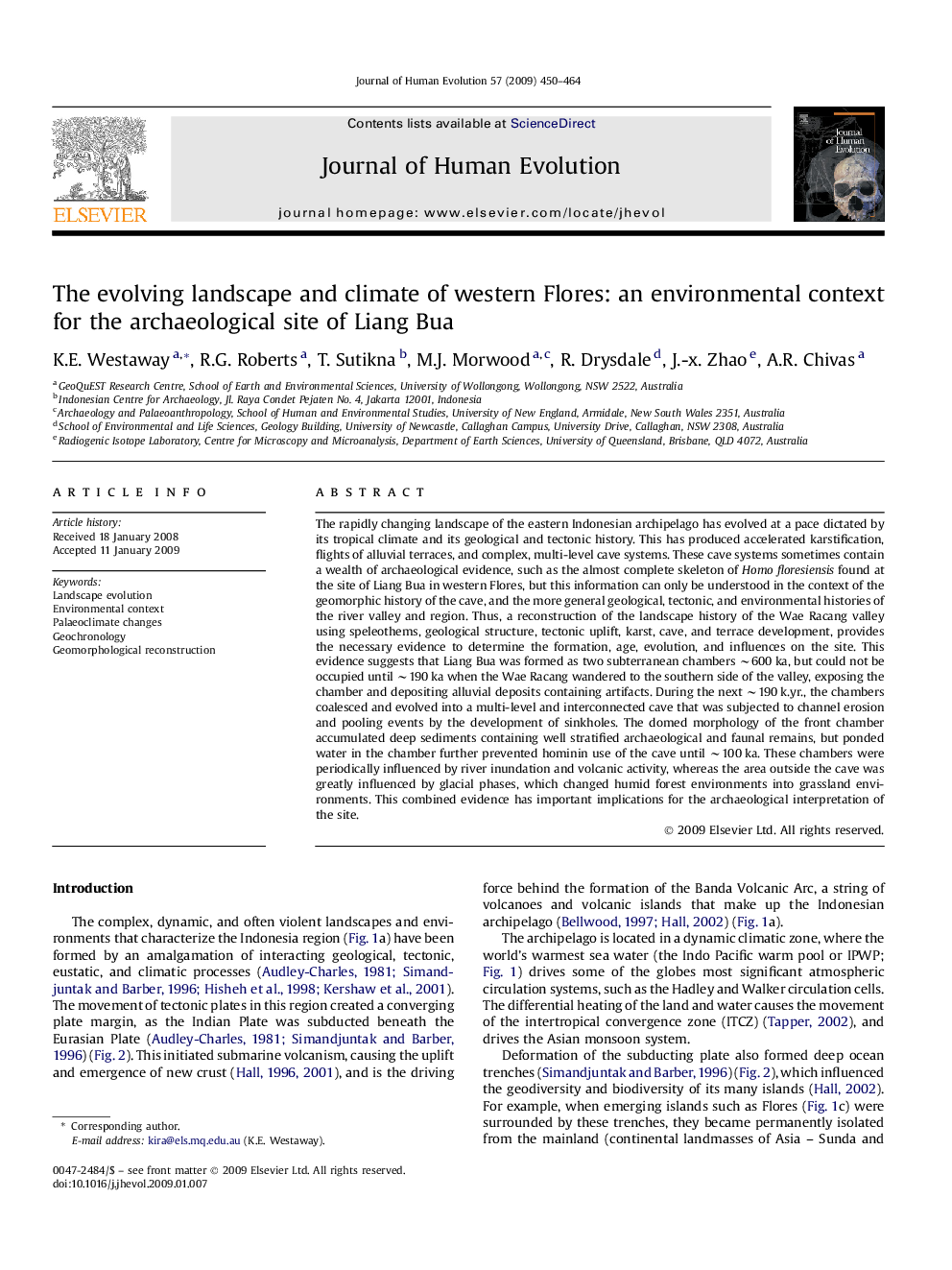| کد مقاله | کد نشریه | سال انتشار | مقاله انگلیسی | نسخه تمام متن |
|---|---|---|---|---|
| 4556983 | 1329517 | 2009 | 15 صفحه PDF | دانلود رایگان |

The rapidly changing landscape of the eastern Indonesian archipelago has evolved at a pace dictated by its tropical climate and its geological and tectonic history. This has produced accelerated karstification, flights of alluvial terraces, and complex, multi-level cave systems. These cave systems sometimes contain a wealth of archaeological evidence, such as the almost complete skeleton of Homo floresiensis found at the site of Liang Bua in western Flores, but this information can only be understood in the context of the geomorphic history of the cave, and the more general geological, tectonic, and environmental histories of the river valley and region. Thus, a reconstruction of the landscape history of the Wae Racang valley using speleothems, geological structure, tectonic uplift, karst, cave, and terrace development, provides the necessary evidence to determine the formation, age, evolution, and influences on the site. This evidence suggests that Liang Bua was formed as two subterranean chambers ∼600 ka, but could not be occupied until ∼190 ka when the Wae Racang wandered to the southern side of the valley, exposing the chamber and depositing alluvial deposits containing artifacts. During the next ∼190 k.yr., the chambers coalesced and evolved into a multi-level and interconnected cave that was subjected to channel erosion and pooling events by the development of sinkholes. The domed morphology of the front chamber accumulated deep sediments containing well stratified archaeological and faunal remains, but ponded water in the chamber further prevented hominin use of the cave until ∼100 ka. These chambers were periodically influenced by river inundation and volcanic activity, whereas the area outside the cave was greatly influenced by glacial phases, which changed humid forest environments into grassland environments. This combined evidence has important implications for the archaeological interpretation of the site.
Journal: Journal of Human Evolution - Volume 57, Issue 5, November 2009, Pages 450–464